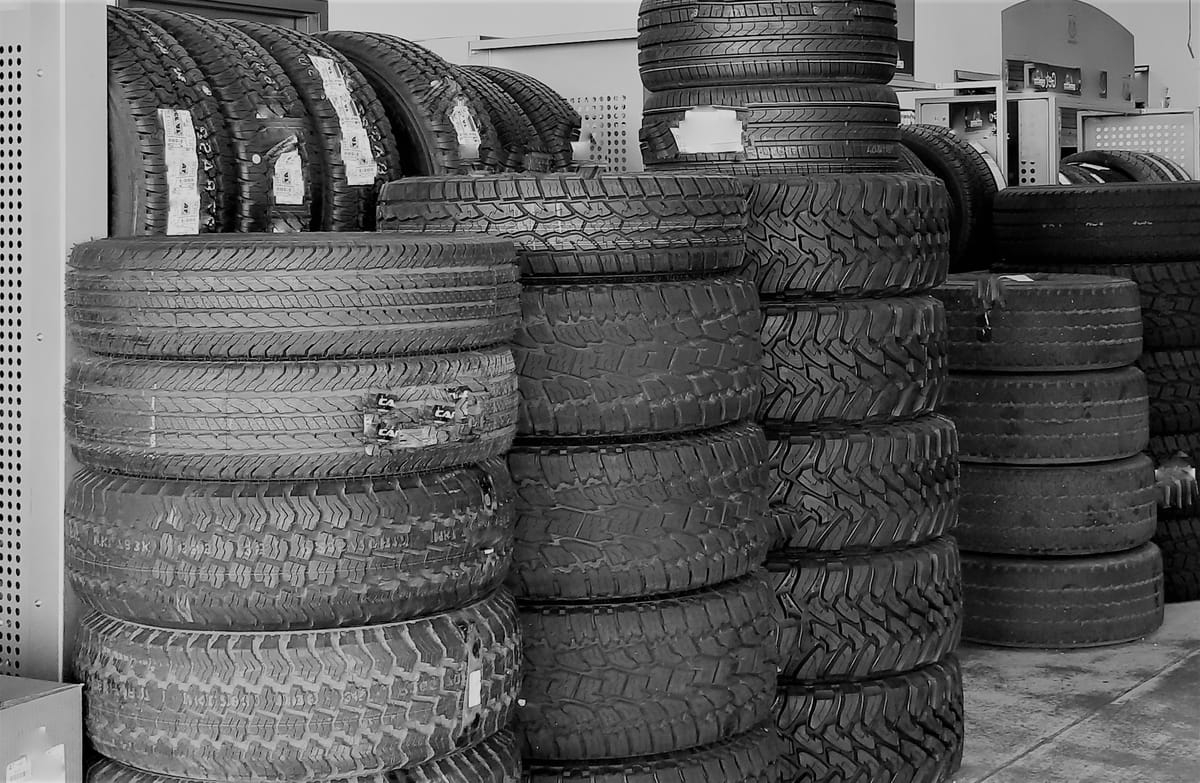Decoding Car Tyres: What Do Those Numbers on Them Actually Mean?

You see them every day: complex codes like 205/55 R16 91V on your car tyres. But do you know what they mean? You might own a car but still probably shrug and think, "Ah, that's just car stuff."
But kumbe, that code is the tyre's birth certificate, CV, and ID card all rolled into one. It tells you everything you need to know about its performance, size, and safety limits.
Understanding this language isn't just for mechanics; it's for every Kenyan driver who wants to stay safe on our unpredictable roads, save money on fuel, and avoid getting a raw deal at the tyre shop.
So, let's break down that code chap chap. Think of it as your secret weapon for your next car maintenance day.
What Does 205/55 R16 91V Mean?
We’ll use this common tyre size as our example. You can find this code on the sidewall of your car's tyres.
205 – The Tyre Width
This is the first number, and it’s pretty straightforward. It represents the width of the tyre from one sidewall to the other, measured in millimetres.
- What it means: In our example, 205 means the tyre is 205 mm wide.
- Why it matters: A wider tyre generally offers more grip, which is great for cornering and braking, especially during the rainy season. However, wider tyres can sometimes increase fuel consumption. It’s crucial to stick to the manufacturer's recommended width for the best balance of performance and efficiency. You can find this info on a sticker inside your driver's door jamb or in your car's manual.
55 – The Aspect Ratio (aka The Pothole Defender)
This is where it gets interesting. The 55 is the tyre's aspect ratio. It’s the height of the tyre's sidewall, expressed as a percentage of its width.
- What it means: Here, the sidewall height is 55% of the 205 mm width. (0.55 x 205 mm = 112.75 mm).
- Why does this matter? This number is your shield against potholes!
- A higher aspect ratio (like 65 or 70) means a taller sidewall. This provides more cushion, a more comfortable ride, and better protection for your rims when you inevitably hit a rough patch on the way to shagz.
- A lower aspect ratio (like 45 or 40) gives you a "low-profile" tyre. They look sporty and offer sharp handling on smooth roads, but they provide a harsher ride, and the rims are far more likely to get damaged by potholes. For most Kenyan roads, a higher sidewall is your best friend.
R – The Construction Type
The R simply stands for Radial.
- What it means: This refers to how the internal layers (or plies) of the tyre are constructed. Radial is the modern standard for all passenger cars.
- Why it matters: Radial tyres are more durable, have better grip, and offer lower rolling resistance, which helps with fuel economy. If you see a tyre without an R, it's likely an old "Bias-ply" design and you should steer clear.
16 – The Rim Diameter
This number tells you the size of the wheel (or rim) that the tyre is designed to fit, measured in inches.
- What it means: This tyre is made for a 16-inch rim.
- Why it matters: This is non-negotiable. You must match this number to the size of your car's rims. Trying to fit a 16-inch tyre on a 15-inch rim is impossible and dangerous.
91 – The Load Index
Now we get to the serious safety numbers. The 91 is a code for the maximum weight that a single tyre can safely carry when fully inflated.
- What it means: 91 doesn't mean 91 kgs! It corresponds to a specific weight on a Load Index Chart. In this case, a load index of 91 means the tyre can carry up to 615 kgs.
- Why it matters: Overloading your car is common, especially during holiday travel. Using a tyre with a lower load index than your vehicle requires is extremely dangerous. The tyre can overheat and fail, leading to a blowout. Always ensure your replacement tyres have a load index that is equal to or higher than the original tyres.
V – The Speed Rating
The final letter, V, is the speed rating, indicating the maximum speed the tyre can safely sustain.
- What it means: Just like the load index, each letter corresponds to a specific speed on a Speed Rating Chart. A V rating means the tyre is safe up to 240 km/h.
- Why it matters: While you won't (and shouldn't!) be hitting 240 km/h on the Thika Superhighway, a higher speed rating (like V, W, or Y) often indicates that the tyre is made with more advanced compounds and construction. This means it can handle heat better and provides superior grip and stability, even at normal highway speeds.
Don't Forget the "Expiry Date"!
Beyond the main code, there's another crucial set of numbers you must check: the Date of Manufacture. This is usually found after the letters "DOT" on the sidewall. You're looking for the last four digits.
- How to read it: The code is in a WWYY format. The first two digits (WW) are the week of manufacture, and the last two (YY) are the year. For example, 3523 means the tyre was made in the 35th week of 2023.
- Why it matters: Tyres expire! The rubber compounds degrade over time, even if the tyre is unused. An old tyre becomes brittle, develops cracks, and is a major blowout risk. As a general rule, avoid buying tyres that are more than five years old. Always check this "birth date" before you pay!
Putting It All Together: Your Tyre Buying Checklist
So, how are we doing so far? Feeling like a tyre guru yet? Here's how to use your newfound knowledge:
- Know Your Size: Check the sticker on your driver's side door jamb. It will tell you the recommended tyre size, load index, and speed rating for your specific car model.
- Match the Numbers: When buying new tyres, ensure the main size code (205/55 R16) matches perfectly.
- Respect the Ratings: Never go lower than the recommended Load Index and Speed Rating. Going higher is generally fine.
- Check the Date: Inspect the DOT code. If the tyres are over five years old, walk away.
- Consider Your Driving: If you mostly drive in the city, you might prioritise fuel economy. If you frequently travel upcountry, a higher aspect ratio and a rugged tread pattern are more important.
Knowing what your tyres are telling you is a vital part of responsible car ownership. It ensures your safety, improves your car's performance, and saves you money in the long run.
Your car is a system, and every part matters. A great car with bad tyres is an accident waiting to happen. That’s why at Peach Cars, we don’t just sell quality-inspected used cars; we want to empower you with the knowledge to keep your car running safely and efficiently for years to come.
Ready to find a reliable ride for your next adventure? Browse our wide selection of inspected and certified used cars on Peach Cars today. We handle the checks, so you can focus on the journey ahead.




